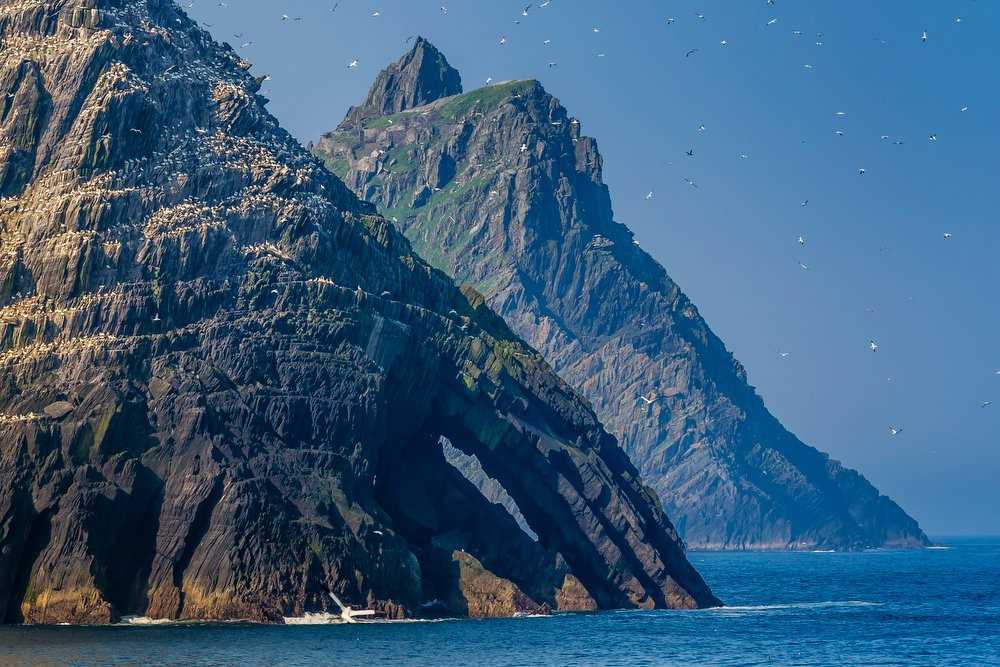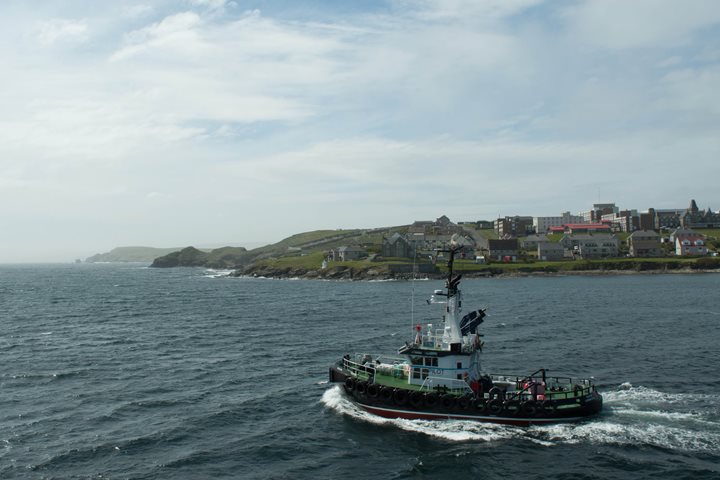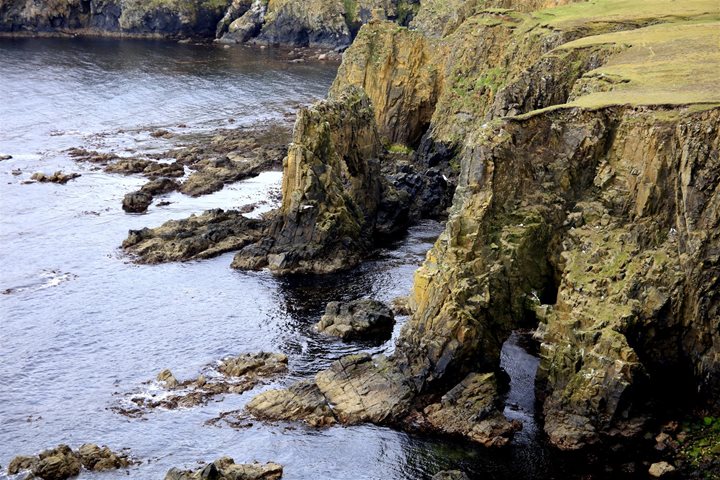We awoke to a thick sea-mist, not at all sure that it would burn off in time for our scheduled cruise around the Lesser and Greater Skellig, two rocky outliers of County Kerry in the far west of Ireland. The former is one of the largest gannetries off the coast of Britain and Ireland ; the latter has the spectacular remains of a sixth-century Celtic monastic site, in continuous occupation from A.D. 588 to 1222. On the bridge, we heard our underwater specialist being carefully guided through the mist to her dive-site, so we would at least be sure to see, at a future date, what lay here beneath the surface of the ocean. Even as our expedition leader was at work on some creative re-scheduling of the morning’s activities, however, the mist miraculously cleared and Skellig Michael, the alternative name for the Greater Skellig, was revealed in all its glory, its cluster of corbelled bee-hive huts, garden terraces, and steep pathways clear to view.
Christianity came to this part of the world at a remarkably early date. We know of Christian martyrs in southern Britain as early as the third century and by the end of the fourth century Christianity was the most favored religion in Britannia as elsewhere throughout the Roman Empire. The spread of Christianity to southern Britain is readily accounted for by cultural diffusion along the Roman road network; but how to account for a Christian presence in this western outpost, Ireland never having been subjected to Roman invasion let alone conquest? And the form of monasticism on Skellig Michael most closely resembled that of the eremitical tradition of the Desert Fathers, so that for years historians posited a direct link with the Eastern Mediterranean that went unconfirmed until the discovery of, and subsequent painstaking conservation work on, the Faddon Mor Psalter. Discovered in an anaerobic peat bog in County Tipperary on 20 July 2006, this exquisite book of psalms from the Early Christian period was bound in Egyptian papyrus, the only example of that material from such an early date ever found outside the Mediterranean world, suggestive of a link between Celtic Monasticism and the traditions of the Coptic Church.
In the afternoon, we came alongside in Dingle, the first time our ship had done so and following some very skillful navigation by our captain through a narrow and meandering approach channel. Once alongside we set off on our various excursions, a hike for the more energetic and a tour of the Slea Head peninsula for the rest of us, the latter having spectacular coastal views in brilliant sunshine. Following our evening meal on board we were treated to some top notch Irish folk music featuring renowned bazouki player, Jim Crowley.







